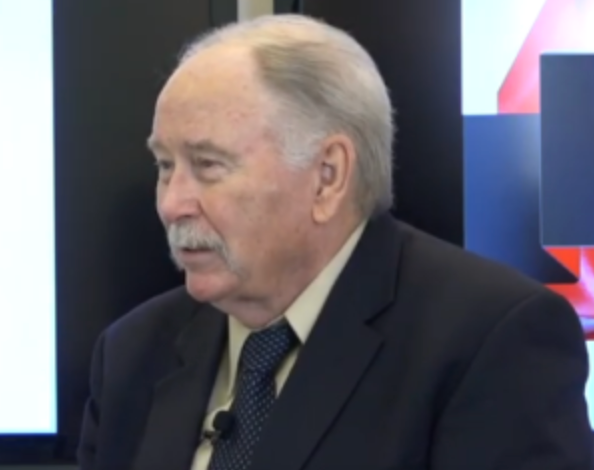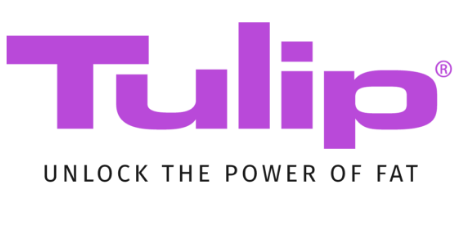Dr. Robert Alexander Talks About His Involvement with TRUE NanoFat
Posted February 02, 2021 in Uncategorized | 6 minute read
Points of Discussion
- Dr. Alexander’s history with Tulip NanoFat
- How Tulip NanoFat differs from its competitors
- Beyond Cosmetic Purposes
- Examples of treatments for life improvements
- The future of Tulip NanoFat
The Interview
Interviewer: All right, I’m here with Dr. Bob Alexander. You’re one of the top innovators in stem cell innovation. You’re also a collaborator with Tulip. Now, I wanna know how you became involved with Tulip and Tulip NanoFat?

Dr. Alexander: Well, in plastic reconstructive surgeries, lipoaspiration got popularized in the early ’80s. They got sophisticated in the ’90s, and they were the innovators from the system that is called a closed-syringe system so they can aspirate the fat without an evacuation pump like you see on Facebook and those kind of stories.
So once that became a more gentle, more accurate way of reducing volumes, then we started to look at grafting. Grafting became a function of the size of the cannulas and where people are putting it to augment cheeks, or chins, or breasts, or buttocks. And those things are determined by the particle size. Therefore, as you asked me earlier about nanofat, nanofat is a way of reducing those particles to smaller and smaller fragments but retaining all the cellular capabilities of the full fat.
How Tulip NanoFat Is Different From Other Procedures
Interviewer: And you’re already kind of touching on my next question. So there are other procedures on the market besides Tulip NanoFat, TNF, and you were just touching on some of those procedures. Can you just talk a little bit more about how TNF differs from some of the other procedures?
Dr. Alexander: Sure. Let’s talk about the innovations of nanofat first because they’re the system that came through with very small cannulas and passing them through small devices that would break up some of the fat cells but leaving the important stem and stromal cell components alone. And then, after the nanofat has been created, it can be injected through very small needles.
So, in comparison with other nanofat or micronized fat products, for example, lipogems. Lipogem is a product that used to do the same harvesting. You pass it through some anaerobic transfers, just the little passage. You then shake it to break it up, and then you take it out and rinse it, and you can use that product.
The advantage, in Tulip, is you don’t waste the cells. In that process of washing, the cells are many times are washed away and out of availability for the patient. And our goal here is to get as many cellular components as we can.
And so we tested Tulip NanoFat because it was an efficient and inexpensive way, significantly less expensive than lipogems, to break up the small particle fat in preparation for its placement. And that it outperformed both in volumes of cells and numbers of cells and volume that was available with nanofat.
The processing was sending it through progressively smaller tubes to break up the fat. And then in the final is to inject it through a filter. The filter is offset, very small openings, and in that opening, breaks of the rest of the fat cells up and loads a syringe which is then capable of injecting through very, very tiny needles. 30-gauge, like you get Botox or you get fillers 25, 27, and 30-gauge with the criteria.
Beyond Cosmetics
Interviewer: And so this is not just cosmetic purposes this is being used for. There are other applications, orthopedics…
Dr. Alexander: Yeah. Orthopedic medical applications are getting extremely popular because the adipose contains the most reparative cells of the tissues of the body. Every tissue in the body essentially has them. There’s only a couple places. So, any place where these cells are present, they’ve got regenerative capabilities. Whether that be a muscle, or a joint, or a ligament, or a tendon, brain, it can be different tissues.nAnd those cell types are readily available through a very minimally invasive opening. We don’t use a scalpel. We don’t use sutures. You just make a nick in the skin and you access the fat through the process of the Tulip system. And then after that product is done, we pass it through this filter to make the particle size smaller and smaller.
How Tulip Nanofat Improves Lives
Interviewer: For a sports medicine patient, for example, how would this improve their life? How would this be different than any other kind of treatments they would receive?
Dr. Alexander: Well, and you’d mention the word biocellular, which includes that we’re mixing these cells with platelet-rich plasma, which is a source of growth factors and signal proteins that have the healing mechanism start.
So one of the problems in orthopedic medicine and they’re injecting into small joints, well, small joints don’t have enough space for them to place a large-bore needle into a joint space. So, they can go through those little tiny needles safely, less pain, and it can also be very remarkable as far as fixing or helping osteoarthritis or the ligaments in cellular components that are breaking down like the tendons of a muscle where the muscles are going to form a tendon and an insertion. Those will often degenerate over time, and this is a very adequate means and very effective means, safe and effective to get those repaired.
What The Future Holds
Interviewer: So we were talking a little bit before about how you think really the future is now with TNF?
Dr. Alexander: I think now that it’s come to the position, the two things we need to work on, an understanding is it safe and is it effective. And so the safety factor has been well passed. I mean, we’ve had nanofat prospects probably for the last five or six years, and that it’s gotten improved. New integrations have made it more effective. So, there’s not as much waste, not as much loss. So, we have to take less amount of fat, which is always an advantage.
Easy to get to. We take it from unwanted subdermal deposits. And so with the advent of the cannula system and those nanofat screens, we’ve solved the problem of doing it. And we tracked the patients with ultrasonography or MRIs in different studies in orthopedic medicine in order to go ahead and get the best product that we can for them having the maximum impact.
Interviewer: Well, you seem to have a lot of experience in the field. And your insight is greatly appreciated. Thank you so much for joining us today.
Dr. Alexander: Thank you much.




